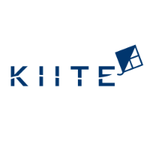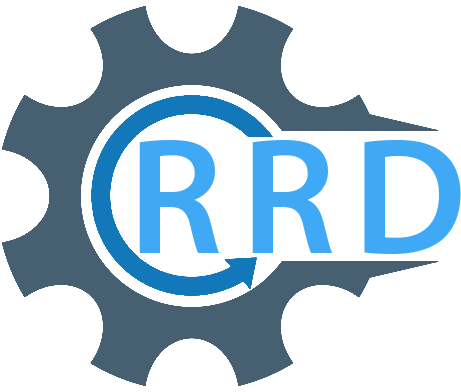Description

Saleshandy

Kiite
Comprehensive Overview: Saleshandy vs Kiite
Saleshandy and Kiite are tools designed to enhance sales and productivity through different approaches. Here’s a comprehensive overview of both:
Saleshandy
a) Primary Functions and Target Markets:
- Primary Functions: Saleshandy is mainly an email productivity and sales engagement tool. Its core features include email tracking, email scheduling, mail merge, auto follow-ups, document tracking, and email analytics. It assists sales teams in enhancing their email campaigns and understanding engagement metrics.
- Target Markets: The primary target market for Saleshandy includes small to medium-sized businesses (SMBs), sales professionals, and marketing teams looking to improve their outreach and communication efficiency.
b) Market Share and User Base:
- Market Share: Saleshandy operates in a competitive environment alongside email productivity and marketing automation tools like Yesware, HubSpot Sales, and Mailchimp. While specific market share numbers can fluctuate, Saleshandy holds a modest position given its targeted features and pricing model.
- User Base: Saleshandy is popular among SMBs and sales teams due to its affordability and ease of use, aiming for users who need efficient yet straightforward email campaign management.
c) Key Differentiating Factors:
- Affordability: Compared to some bigger players, Saleshandy offers a more budget-friendly pricing structure.
- Ease of Use: Designed with user-friendly interfaces and easy integration with email clients such as Gmail and Outlook.
- Email Focused Features: Its specialization in email tracking and engagement metrics sets it apart from broader marketing tools.
Kiite
a) Primary Functions and Target Markets:
- Primary Functions: Kiite is a sales enablement platform that focuses on creating, managing, and sharing sales playbooks and knowledge repositories. It aims to help sales teams access the right information and best practices quickly.
- Target Markets: Kiite targets enterprise sales teams and organizations seeking to improve internal knowledge sharing and sales training processes.
b) Market Share and User Base:
- Market Share: Within the sales enablement space, Kiite competes with companies like Guru, Highspot, and Seismic. It's recognized for its niche focus on playbooks and knowledge management, giving it a unique standing in the market.
- User Base: Typically used by larger sales organizations that require robust systems for managing internal information and training materials. Its user base includes sales operations teams and enablement professionals.
c) Key Differentiating Factors:
- Sales Playbook Focus: Kiite's primary differentiator is its emphasis on sales playbooks and the management of them.
- AI and Machine Learning: Incorporates AI to recommend relevant content and improve sales processes through data insights.
- Integration Capabilities: Provides strong integrations with CRM and other sales tools to enhance workflow fluidity.
Comparison
- Functionality Focus: Saleshandy leans more towards email engagement and tracking while Kiite is concentrated on knowledge management and playbook creation.
- Target Audience Size: Saleshandy caters more towards smaller teams or businesses looking for email solutions, whereas Kiite is more suitable for enterprises needing comprehensive sales enablement.
- Pricing and Accessibility: Saleshandy tends to be more accessible in terms of cost, making it attractive for smaller businesses, while Kiite’s pricing aligns with enterprise capabilities offering tailored solutions.
In conclusion, while both Saleshandy and Kiite aim to enhance sales productivity, they do so through different functions and cater to distinct target markets. Saleshandy is more oriented towards email efficiency, while Kiite focuses on knowledge management and sales resource optimization.
Contact Info

Year founded :
2015
+91 94088 56068
Not Available
India
http://www.linkedin.com/company/saleshandy

Year founded :
2017
+1 800-499-2659
Not Available
Canada
http://www.linkedin.com/company/kiite-inc
Feature Similarity Breakdown: Saleshandy, Kiite
To provide a detailed feature similarity breakdown for Saleshandy and Kiite, let's divide the comparison into the specified sections:
a) Core Features in Common
-
Email Tracking:
- Both Saleshandy and Kiite offer email tracking as a core feature. This allows users to see when emails are opened, providing insights into engagement and timing for follow-ups.
-
Templates:
- They offer email templates that facilitate quick communication without drafting messages from scratch each time.
-
CRM Integration:
- Both platforms integrate with various CRM systems, enabling users to streamline their sales processes and keep customer data in sync.
-
Analytics and Reporting:
- Analytics features are available in both, helping users track the performance of their emails and engagement rates.
b) User Interface Comparison
-
Saleshandy:
- Known for its straightforward and user-friendly interface, Saleshandy’s UI focuses on ease of use with a dashboard that provides quick access to tracking metrics, templates, and integration settings. It is relatively simple and functional, making it accessible even for users who are not tech-savvy.
-
Kiite:
- Kiite offers a more modern and visually engaging interface with a focus on AI-driven insights and recommendations. Its design is slightly more complex, featuring interactive elements that guide users through various processes. Kiite aims to enhance user experience with features that adapt to user behavior and preferences.
c) Unique Features
-
Saleshandy:
- Mail Merge: Saleshandy supports mail merge campaigns, allowing users to send personalized emails in bulk while tracking metrics like open and reply rates.
- Advanced Scheduling: It offers advanced scheduling for emails, which enables optimal timing based on recipient’s time zone and past engagement patterns.
-
Kiite:
- AI-Powered Knowledge Assistant: Kiite differentiates itself with an AI-powered virtual assistant that helps sales teams access and share knowledge efficiently. This means users can leverage AI to find answers and share best practices or sales playbooks quickly.
- Interactive Playbooks: Kiite offers a unique feature of interactive sales playbooks, enabling sales teams to streamline onboarding and sales training processes with guided workflows.
In summary, while both Saleshandy and Kiite share common features focused on sales efficiency and email management, their primary differences lie in the interface design and unique offerings like AI-assisted knowledge management in Kiite and email-specific functionalities like mail merge in Saleshandy. Each platform caters to slightly different needs depending on a user's focus on advanced email operations or AI-assisted sales knowledge and training.
Features

Team Collaboration
Email Scheduling
Email Campaigns
Email Tracking
CRM Integration

User-Friendly Interface
Enhanced Communication
Collaborative Knowledge Sharing
Efficient Information Retrieval
Best Fit Use Cases: Saleshandy, Kiite
To effectively compare Saleshandy and Kiite, let’s delve into their best-fit use cases, suitable scenarios, and how they cater to different industries and company sizes.
Saleshandy
a) Types of Businesses or Projects:
-
Sales Teams at SMBs & Startups: Saleshandy is particularly beneficial for small to medium-sized businesses and startups looking to optimize their email outreach. It offers features such as email tracking, mail merge personalization, and email scheduling, which are vital for sales teams trying to manage and track customer engagement without a deep investment in large-scale CRM systems.
-
Businesses Focused on Email Outreach: Companies that heavily rely on email marketing or communication can use Saleshandy to its full potential because of its powerful tracking and engagement analytics.
-
Remote and Distributed Teams: With its user-friendly interface and collaboration features, teams that operate in remote setups can efficiently coordinate sales activities and track collective performance.
d) Catering to Industry Verticals & Company Sizes:
- Verticals: Industries such as technology, SaaS, consulting, and digital marketing can see significant benefits due to a heavy reliance on digital communication.
- Company Sizes: Best suited for small to medium enterprises or startup environments where budget constraints necessitate cost-effective sales tools.
Kiite
b) Scenarios for Preferred Use:
-
Sales Enablement and Knowledge Management: Kiite shines in scenarios where there is a need to enhance sales enablement processes. It is designed to capture, organize, and provide easy access to company knowledge and resources, empowering sales teams to perform better.
-
Businesses with Complex Sales Processes: For companies with intricate sales cycles and a wealth of information needing streamlined access, Kiite becomes crucial by reducing the friction involved in finding necessary data.
-
Training and Onboarding: Organizations looking to improve onboarding processes and ongoing training initiatives for their sales teams can leverage Kiite for its learning and knowledge sharing capabilities.
d) Catering to Industry Verticals & Company Sizes:
- Verticals: It caters effectively to sectors that require constant updating of knowledge bases, including insurance, finance, and IT services, where training and access to accurate information are pivotal.
- Company Sizes: While flexible, it tends to cater to mid-sized to larger enterprises that are focused on scaling their sales teams and processes efficiently.
Conclusion
-
Saleshandy is primarily geared towards businesses that prioritize cost-effective and efficient email outreach and monitoring. It's ideal for smaller to medium businesses and startups aiming to enhance their sales operations without the need for complex CRM solutions.
-
Kiite, on the other hand, is apt for larger organizations that emphasize centralized knowledge management and sales enablement. It’s ideal for companies with complex products and sales cycles, requiring continuous training and information consistency.
Both tools offer distinct advantages depending on the specific needs, size, and sector of the business, providing essential functionalities to optimize sales processes.
Pricing

Pricing Not Available

Pricing Not Available
Metrics History
Metrics History
Comparing teamSize across companies
Conclusion & Final Verdict: Saleshandy vs Kiite
In evaluating Saleshandy and Kiite, it's essential to consider their features, usability, pricing, and specific needs of the users.
a) Best Overall Value:
Saleshandy emerges as the product offering the best overall value, particularly for organizations focused on email outreach and engagement tracking. Its cost-effective pricing, combined with robust features such as email tracking, auto-follow-ups, and analytics, provides substantial utility for sales teams aiming to enhance their outreach efforts efficiently.
b) Pros and Cons:
Saleshandy:
-
Pros:
- Comprehensive Email Tracking: Allows users to track email opens, link clicks, and response rates, which is vital for understanding engagement.
- Automated Follow-ups: Users can schedule automatic follow-up emails to enhance communication efficiency.
- Affordability: Designed to suit businesses of various sizes with competitive pricing tiers.
- Ease of Integration: Integrates seamlessly with existing email systems and CRMs.
-
Cons:
- Email-Centric: Primarily focused on email; may not be as beneficial if your strategy doesn't revolve around email marketing.
- Feature Scope: While excellent for email tracking and follow-ups, it may lack more comprehensive CRM features.
Kiite:
-
Pros:
- AI-Driven Knowledge Management: Uses AI to offer insights and recommendations, enhancing decision-making.
- Customizable Playbooks: Helpful for building tailored sales strategies and increasing team productivity.
- Collaborative Features: Facilitates easy sharing and collaboration among teams, strengthening internal communication.
-
Cons:
- Higher Cost: Typically priced at a premium, which may not be suitable for smaller organizations with budget constraints.
- Complexity: May require a steeper learning curve for effectively leveraging AI functionalities and integrations.
c) Recommendations:
-
For Users Prioritizing Email Outreach: Saleshandy is recommended due to its specialized features that enhance and streamline email campaigns. It is particularly beneficial for teams whose primary focus is on improving email engagement and response rates at a scalable cost.
-
For Users Needing Knowledge Management and AI Insights: Kiite would be the preferred choice. It is ideal for organizations looking for advanced AI capabilities to drive strategic decision-making, custom playbook development, and enhance collaborative efforts with a premium budget.
-
Consideration of Organizational Needs: Users should carefully assess their specific needs, such as the importance of email functionality versus knowledge management. They should also consider their budgetary constraints and desired ease of use. Trying out free trials or demos can also aid in making an informed decision based on user experience with each platform.
Ultimately, the decision should align with the specific strategic goals, operational needs, and budgetary considerations of the user or organization.
Add to compare




